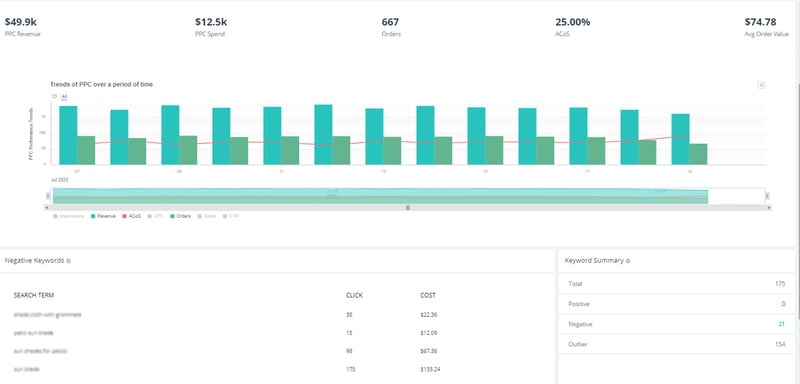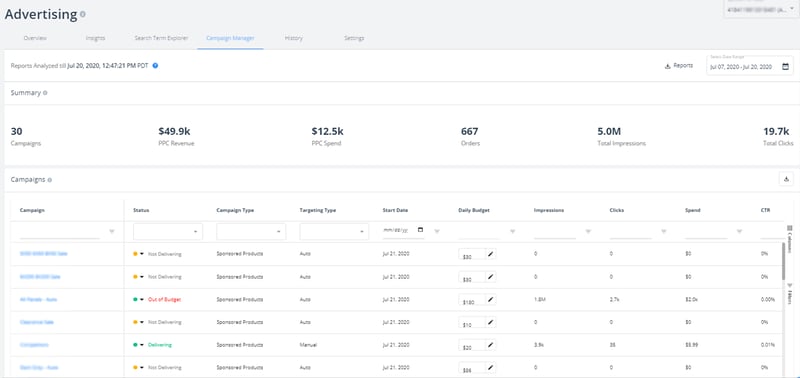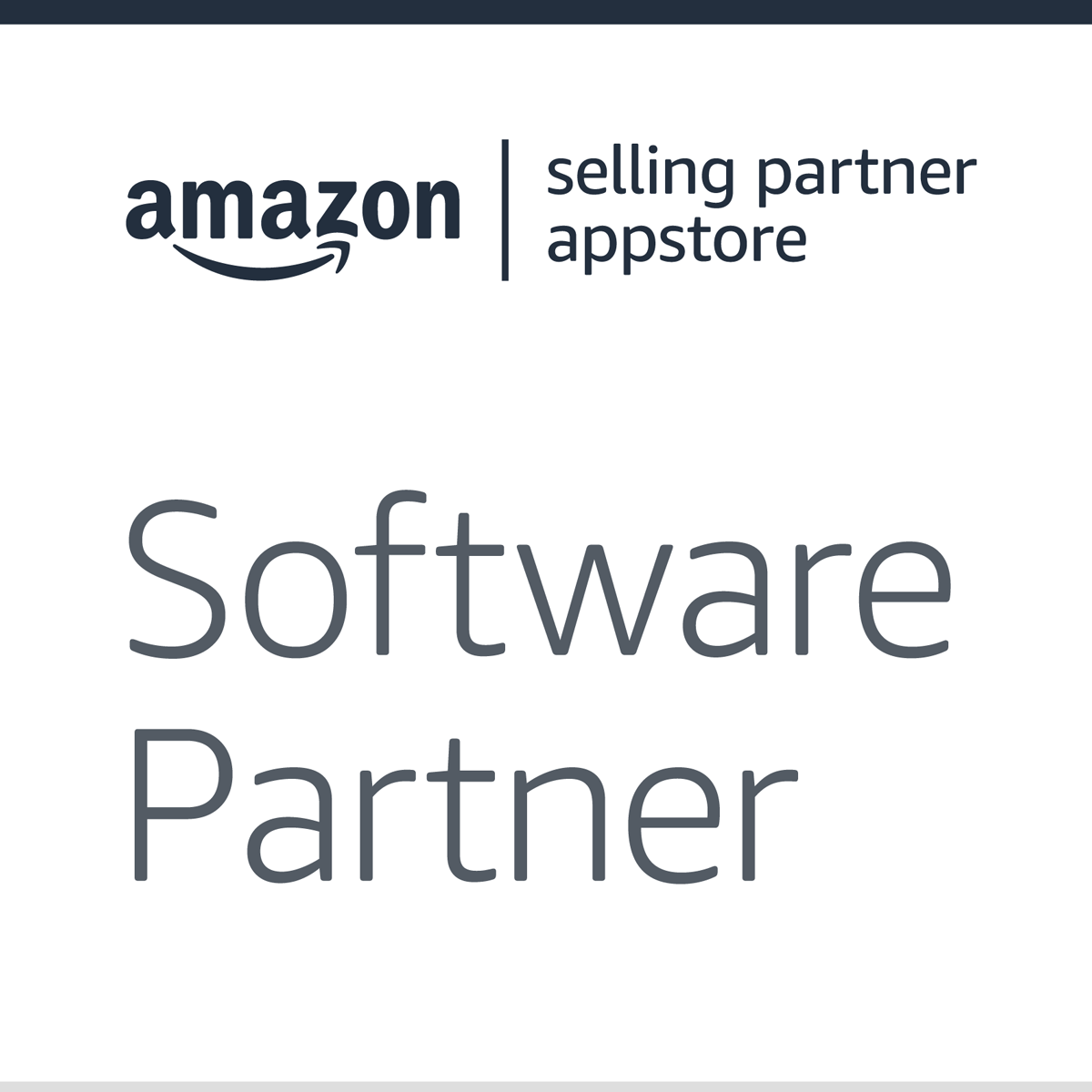Originally published on August 5, 2020, updated September 6, 2024
Menu
Join Our Email List
- Receive our monthly newsletter.
- Stay up to date on Amazon policies.
- Get tips to grow your business.
This guest article features ten expert Amazon advertising tips from Arishekar N, Head of Marketing & Growth at SellerApp.
Amazon is a marketplace crowded by buyers and sellers. The competition is huge. With Amazon being a customer-centric marketplace, sellers need to take certain measures to boost their product discoverability and sales.
If you are a new seller, you might find it hard to gain more sales due to low visibility. Listing your product is one thing, getting visibility to win sales is another. Amazon advertising is one of the best ways to kick start your product sales.
The number of sellers and brands leveraging Amazon PPC (Pay per click) is growing significantly year over year. In this article, let’s take a look at ten Amazon advertising tips to get more sales.
With advertising platforms, you need to have huge control over the optimization process. This helps you keep a track of your ad spend and give room to experiment with strategies. Keyword research for Amazon PPC campaigns helps you with that.
Find high-converting (long-tail) keywords from your automatic campaigns, and target them in your manual campaigns. With manual campaigns, you can handpick the keywords that you want to bid on. Therefore, you have granular control over your ad spend. Depending on your target ACoS, you can maximize your sales with precise targeting.
You need to have a consistent structure for your Amazon ad campaigns. If not, it could lead to repeat ads and waste your money. You can structure your ad campaigns based on your goals. However, you can try creating a campaign structure based on:
This is important for brands and sellers with a vast portfolio of products. You will easily lose track of the keywords that are a part of your ad campaigns. So, you need to create different ad groups for keywords with different functionality to eliminate wasteful ad spend.
Let’s say, you are selling shoes on Amazon. Then, you need to create different ad groups for keywords because:
While there is no one-size-fits-all answer for ad grouping, you need to customize them based on the keywords’ practicality and target audience.
Amazon Sponsored Brands should be a part of your top-of-funnel advertising activities. Pair them with category and brand-related keywords to increase your customer reach. With Sponsored Brands, you can direct the customer to a product listing or a brand store. This enables customers to learn more about your product offerings. You may not be able to generate sales right away, but increasing your brand awareness will gain more sales over time.
Related reading: Ad Relevance is the Future of Amazon Advertising
With multi-channel selling growing everywhere, data is your go-to option to get actionable insights to thrive in the competitive eCommerce landscape. Though Amazon might be providing all the relevant data to optimize your campaigns, the data available on the platform is hard to understand most of the time. So you need to find the right analytics solutions to create a synergy between the market, competition, and performance.
Everyone knows it, but here, I want to mention an important point about PPC optimization. At times, Amazon sellers optimize their PPC campaigns with a different set of keywords from the ones that are in the listings. You will lose potential sales and organic ranking. Therefore, optimize your PPC campaigns with relevant keywords and target a similar set of keywords in your product listings too.
Pro Tip: Audit your Amazon PPC campaigns at least once in a fortnight to optimize for maximum efficiency.
Running automated campaigns can be time-consuming and manual campaigns can drain your money without proper optimization. You need to filter the keywords based on ad groups and campaigns to see if they are working properly.
With SellerApp PPC Analyzer, you can automate your campaign management process. Once you set up a target ACoS, SellerApp’s algorithm will do the rest of the work. You can optimize your ad campaigns based on high-performing and low-performing keywords. Also, the PPC analyzer highlights your campaigns’ performance with critical KPIs (Key Performance Indicators) in the form of graphs and tables to make you understand better.

The best part? It’s easy to navigate, and you’ll get accurate results within no time.

Amazon PPC campaigns aren’t always shown for the exact search terms. So, you need to ensure that you’re not ranking for irrelevant search terms.
For instance, if you are selling a laptop on Amazon, you might not want to rank for "desktop PC."
Bidding on your competitors’ branded keywords is essential if you want to capture their market share. However, one of the most common questions I heard from sellers was: "I am ranking high in the search results for my brand keywords, is it still necessary to advertise for my own brand keywords?"
Yes, it is! Because:
Your success on Amazon largely depends on picking the right products, and it is equally important to identify the ones that aren’t selling well. Any product that doesn’t offer a good return on your investment needs to be eliminated. Monitor your advertising reports in Seller Central to find the products that aren’t driving enough revenue.
Your time and money are valuable. So, spend them wisely on optimizing the right product which drives high profitability.
Driving external traffic to your Amazon product listing is a strategy you need to use alongside your PPC campaigns. The main advantage is that you can increase your sales momentum quickly. Apart from this, external traffic helps you boost your organic ranking.
Amazon keeps a track of the external traffic to your listings. External traffic can be in the form of paid ads, emails, posts, and social media. Many sellers say that Amazon uses this information to determine the demand for a product. This makes external traffic a powerful way to grow your business with greater stability. Why? Because you’ll be able to build a loyal customer base by creating a customer list off Amazon. This way you won’t risk violating Amazon terms of service.
Keep reading: 6 Mistakes to Avoid with Your Amazon PPC Advertising
As a seller, you need to identify the goal to decide on the advertising strategy. Along with that, the customer journey is extremely important to optimize your sales funnel. The best part of Amazon advertising campaigns is that you can use them to target customers at different levels of your sales funnel. Use these advanced Amazon advertising tips to put your customer first and hone in on their purchasing intent.
Originally published on August 5, 2020, updated September 6, 2024
This post is accurate as of the date of publication. Some features and information may have changed due to product updates or Amazon policy changes.
These Stories on Advertising
14321 Winter Breeze Drive
Suite 121 Midlothian, VA 23113
Call us: 800-757-6840





Copyright© 2007-2025 eComEngine, LLC. All Rights Reserved. eComEngine®, FeedbackFive®, RestockPro®, and SellerPulse® are trademarks or registered trademarks of eComEngine, LLC. Amazon's trademark is used under license from Amazon.com, Inc. or its affiliates.
No Comments Yet
Let us know what you think